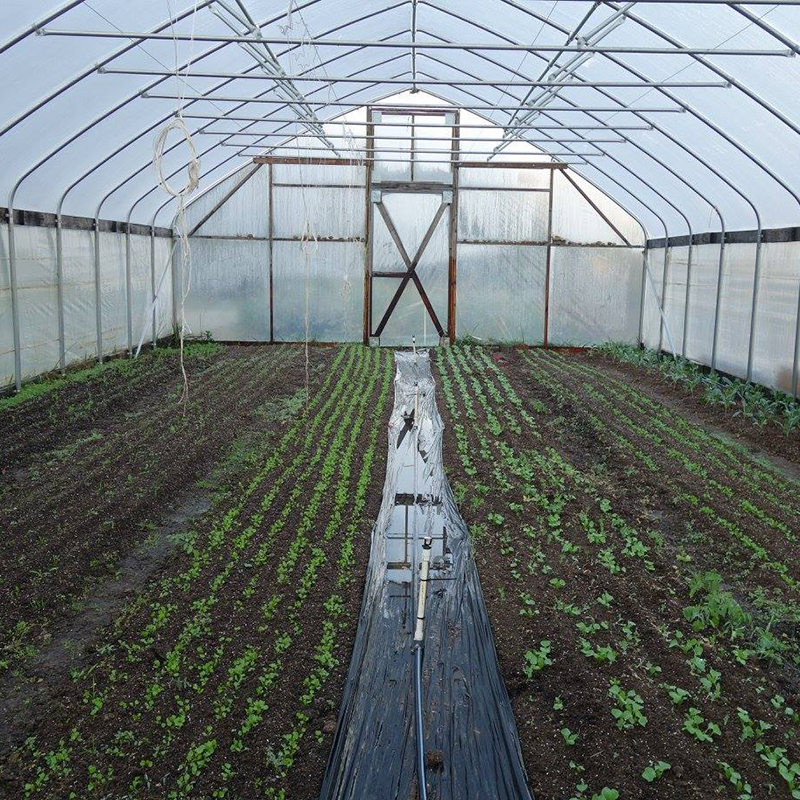This article is brought to you by Local Roots NYC, a network of community shared agriculture programs (CSAs) in New York City.
Local Roots NYC and Untapped Cities are offering a giveaway for Thanksgiving: a pasture raised chicken from Wild Fox Farm in Pennsylvania. Wild Fox chickens have an added diet of organic feed that makes these chickens tasty and good for you. They have never received hormones or antibiotics – they offer whole chickens as opposed to specific cuts to support a sustainable food chain where no parts are wasted. This giveaway prize will be a whole chicken, uncooked that weighs about 4lbs and can be picked up at our homebase in the South Street Seaport. Local Roots NYC will also give you a tub of creamy, Ronnybrook butter to cook your chicken in.
Photos of the Wild Fox farmer can be found here.
Enter the giveaway below by posting a new fall photograph of New York City to Instagram, following @untappedcities and @LocalRootsNYC on various social media channels. Then, read about the history of Thanksgiving dinner below!
Your Thanksgiving Dinner Table: a plump turkey that will feed you for days and induce naps between grazing, sweet pies with pumpkin or apple fillings, roasted vegetables that fill the room with aromatics of rosemary, sage and thyme. Flashback to the first Thanksgiving meal in 1621 and the setting would be quite different. Pilgrims dined together in Plymouth Colony supposedly in early October a year after the Mayflower landed at Plymouth Rock. Little fun fact or conspiracy: our European ancestors did not first land on Plymouth Rock. Historian George Willison claims this story is the result of really good PR by the townsfolks to attract attention; the story was first told nearly a century after the Mayflower landed by a ninety five year old man Thomas Faunce. Unfortunately, Willison’s book came out at the end of World War II and was overshadowed by much more pressing world affairs. Two pieces of Plymouth Rock can actually be found in Brooklyn; parts of the infamous rock were sold and given to people when it had to be moved due to water levels rising.
What filled the dinner table is also a bit different than what we were taught as kids. According to Kathleen Wall, culinarian at the Pilgrim Hall Museum, Thanksgiving was a three day feast of eels and shellfish, such as lobsters and mussels along with wildfowl such as goose and duck. Though wild turkey was present, it was most likely not the highlight of the meal. Sources claim that turnips, carrots, onions, garlic and pumpkins might have been growing in the gardens at those times; the word “vegetable” was a term used for any plant and interchangeable with “herb” – an “herb” was a plant that was a useful “vegetable” for either culinary or medicinal uses.
Our beloved mashed potatoes side would not be seen on the first Thanksgiving table, as the white potato originated from South America and didn’t arrive in the Colonies until 1621 when the Governor of Bermuda, Nathaniel Butler brought two large chests of potatoes to Virginia.
If turkey wasn’t the featured protein, then why do nearly 88 percent of American homes (according to the National Turkey Federation) eat turkey on Thanksgiving? Remember the nursery rhyme, “Mary Had a Little Lamb”? Well there’s a connection between Mary and our country’s turkey obsession and it has to do with Mary’s creator, Sarah Joseph Hale. Hale’s novel Northwood was the first glimpse of Hale’s obsession with Thanksgiving; the book describes the character and manners of New England including a holiday dinner with roasted turkey, a savory stuffing, pickles, butter, pumpkin pie, and other rich cakes. For 17 years, Hale wrote letters to presidents including Abraham Lincoln requesting for a unified Thanksgiving holiday; prior to this, each state scheduled its own Thanksgiving holiday at different times. She noted the ideal date saying “The last Thursday in November has these advantages — harvests of all kinds are gathered in — summer travellers have returned to their homes — the diseases that, during summer and early autumn, often afflict some portions of our country, have ceased, and all are prepared to enjoy a day of Thanksgiving.” Eventually in 1863, Lincoln proclaimed Thanksgiving a national holiday perhaps to bring some sense of unity to our country during the Civil War.
We’ve moved far from the historical significance of our beloved food holiday and it’s become a bit of a culinary competition – but a really good, delicious competition. There is tremendous pressure to prepare the perfect turkey and have a decadent feast. Thankfully, our culinary techniques have evolved since colonial times of predominantly boiled meats and vegetables. Below is a recipe from Local Roots NYC to dress your salad this Thanksgiving and a helpful infographic on turkey cooking tips. It’s far from what was eaten back in 1621, which might not be so bad. Enjoy – and don’t forget to give thanks to the farmers that grew the food we will graciously devour this Thanksgiving!
Local Roots NYC builds a vibrant community around local food through a network of subscription based produce markets and host celebrations like dinner parties and cooking clubs. See their food community and their family of farmers @localrootsnyc and find out how you can shop for your locally grown Thanksgiving groceries at neighborhood bars through their Pop Up Thanksgiving CSA at LocalRoots NYC.






